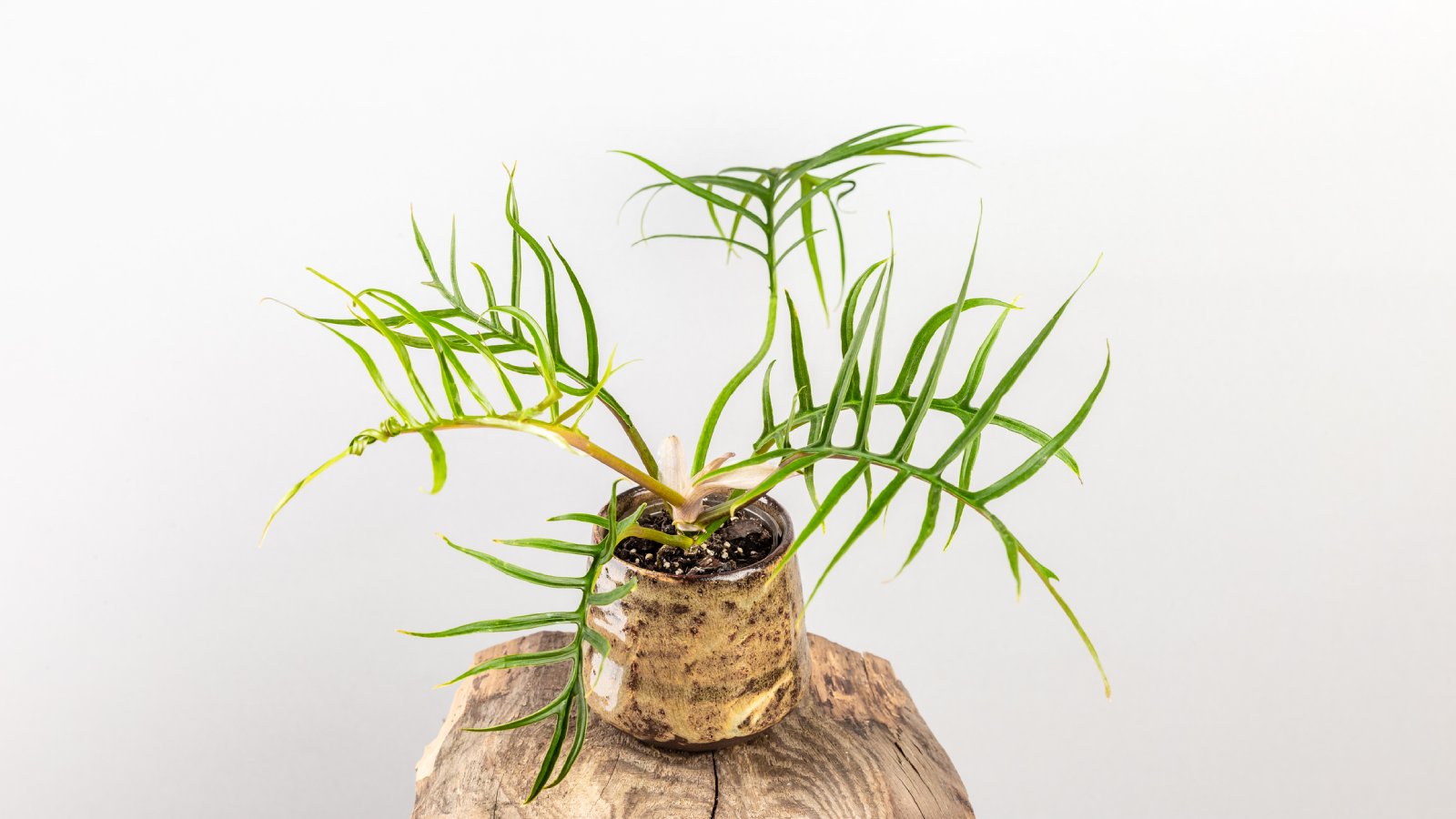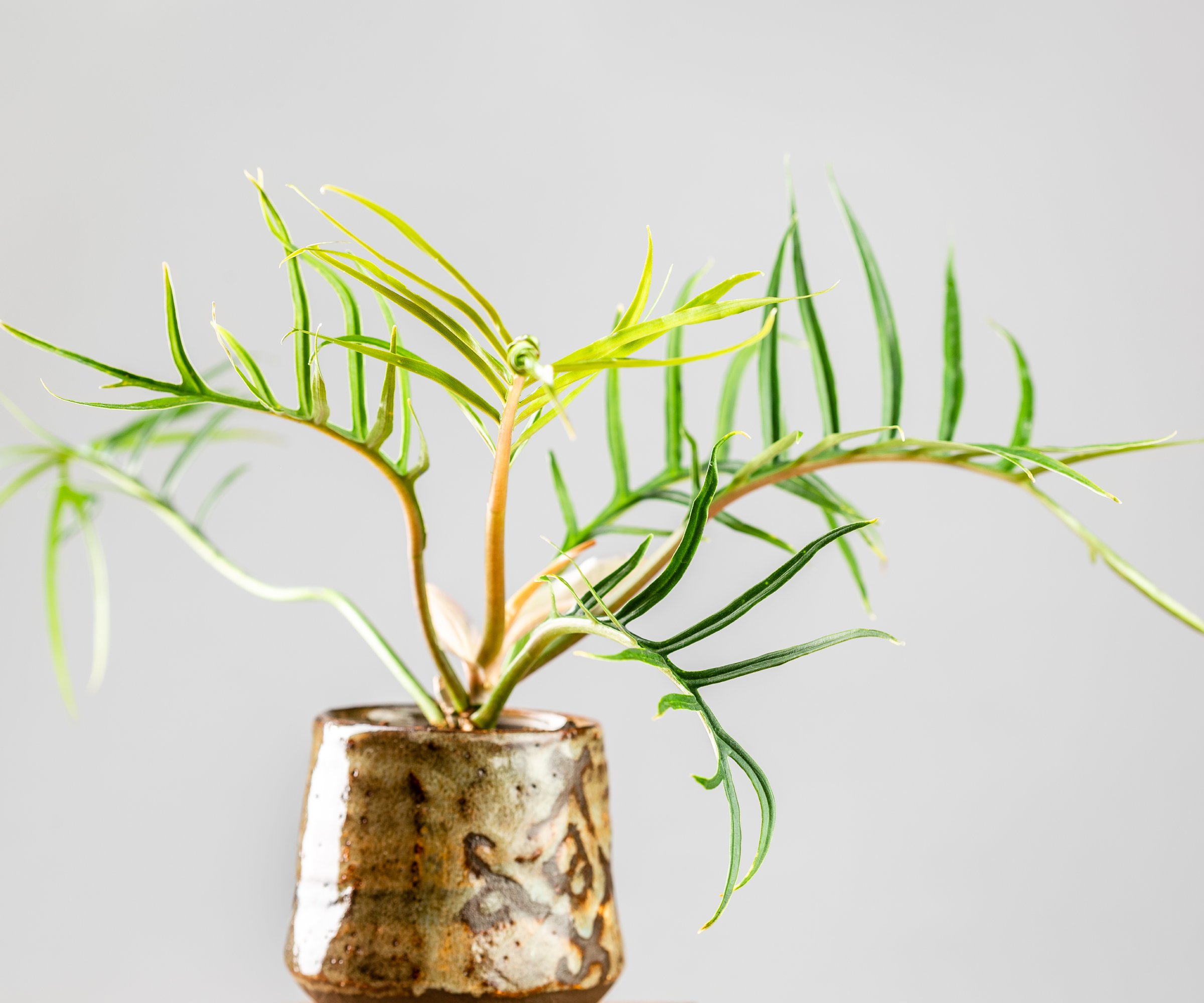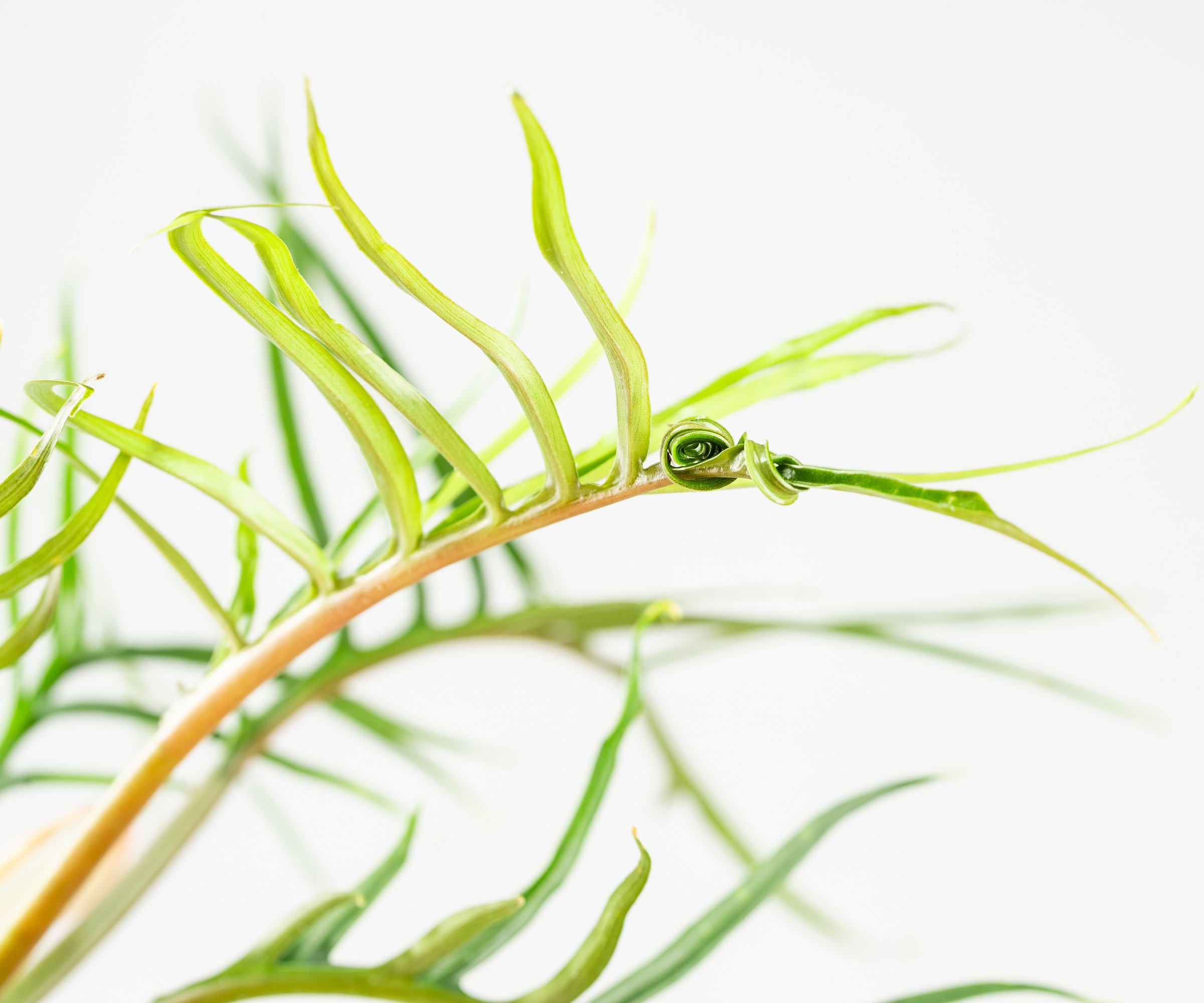Philodendron Tortum: How To Grow This Totally Unique Type Of Philodendron
The delicate look of the philodendron Tortum makes it a lovely accent in the home. It’s especially happy in a bathroom where there’s plenty of humidity. Enjoy.


Philodendron tortum Quick Facts
Botanical name: Philodendron tortum
Height: 20 feet (6.1 m.)
Spread: 3-5 feet (.91-1.5 m.)
Sun exposure: Partial
Soil requirements: Well-draining, organic, rich
Hardiness zones: USDA 10-13
When to plant: Spring
There are over 450 species of Philodendron, with Philodendron tortum as one of the more unique forms. Unlike many common Philodendron houseplants, this species is characterized by narrow leaflets.
Philodendron tortum in the wild is a rainforest climbing plant native to Central and South America. Another name for the plant is Fernleaf Philodendron, a nod to its slender leaves.
Philodendron Tortum Care
Here's our exhaustive guide to Philodendron tortum care. Enjoy learning about this unusual type of philodendron. And after, consider getting your own Philodendron tortum in the Gardening Know How shop.
Light
Philodendron tortum is an understory plant. As young plants, they start life on the forest floor. Philodendron tortum mature plants climb trees and other structures as they seek the light. The plant prefers indirect sunlight which mimics the dappled light it receives in nature. Place it within 3 feet (0.9 m) of an eastern or western window. If placed in a southern window, use a gauze or sheer curtain to filter the light.
Water

As a rainforest plant, this Philodendron is used for moisture. Philodendron tortum in the wild area of north Brazil to Bolivia receives plenty of rainfall. As a houseplant, let the top few inches (2.54 cm.) of soil dry to the touch. Water until it leaches out the drainage holes. Some tropical plants are sensitive to municipal water supplies. Let your tap water sit out overnight and off-gas and come to room temperature before adding it to the container.
Temperature & Humidity
Keep the plant away from drafty doors and windows. This Philodendron prefers warm temperatures similar to those found in most homes. The preferred humidity range is 50-70 percent. For this reason, a bathroom is an ideal home for the plant. You may also use a humidity tray (a saucer filled with pebbles and water) to increase ambient humidity through evaporation. Do not place the plant near drying heating ducts.
Soil
The plant does best in well-draining soil. Most good purchased potting mixes are ideal. Add a handful of vermiculite or perlite to enhance drainage. If you make your own soil it should be high in organic matter and well-draining.
Gardening tips, videos, info and more delivered right to your inbox!
Sign up for the Gardening Know How newsletter today and receive a free copy of our e-book "How to Grow Delicious Tomatoes".
Fertilizer
Feed the Philodendron in the active growing seasons of spring through summer. Use either a synthetic or organic houseplant food mixed in water once per month. You might also opt for a time-release formula applied to the soil in early spring.
Problems, Pests & Diseases
Overwatering the plant could lead to fungal diseases. Low humidity will slow growth and leaf production. If you move the plant outdoors in the warm season, mealybugs and spider mites are the most common pests. Use horticultural oil sprays to combat insect invaders. This plant is a climber and will need a stout stake or moss pole to climb.
Pruning

Philodendron tortum doesn’t require pruning. Remove any damaged or dead leaves at any time, taking the entire petiole but taking care not to cut the stem. This plant can reach 20 feet ( 6.1 m.) in the wild but is unlikely to achieve that height in the home. If necessary remove excess growth at a growth node.
Propagation
Take a stem cutting with a node in early spring as active growth resumes.. Take a 6-inch (15 cm.) long cutting using disinfected, sharp pruners. Set the cut end in a glass of water to root. You can also dip the end in rooting hormone and place the cutting in lightly damp soil. Provide average light, heat, and humidity as roots begin to form. Transplant when there are plenty of roots.
Repotting
You will need to increase the container size as the plant outgrows its housing. However, the plant prefers to be a bit crowded. Use good organic-rich soil and water it well around the roots. Large, mature plants may require another pair of hands to successfully transfer the Philodendron. Increase the size of the support as needed.
Varieties
Outside of the standard form there is also a Philodendron tortum variegated. This plant boasts striping in cream colors. Variegated plants need higher light levels to keep the coloring.
Frequently Asked Questions
Is Philodendron tortum climbing or crawling?
Young plants seem to be almost crawlers until they find something to begin to climb up. Mature plants are definitely climbing plants.
What is the common name for Philodendron tortum?
Fernleaf Philodendron or skeleton plant are common names and indicate the leaf form.
This article features products available from third-party vendors on the Gardening Know How Shop.

Bonnie Grant is a professional landscaper with a Certification in Urban Gardening. She has been gardening and writing for 15 years. A former professional chef, she has a passion for edible landscaping.
-
 Looking For Plants To Give You The Soft And Fuzzies? Try These 5 Fuzzy Leaf Plant Options
Looking For Plants To Give You The Soft And Fuzzies? Try These 5 Fuzzy Leaf Plant OptionsLovers of texture, drama, silver foliage and tactile plants will adore these special sensory garden additions. These fuzzy leaf plant options will leave you all aglow
By Susan Albert
-
 Get Ready For A Summer Of Hummers! Grow These Full Sun Hummingbird Plants and Flowers
Get Ready For A Summer Of Hummers! Grow These Full Sun Hummingbird Plants and FlowersIf you’re lucky enough to enjoy a sunny backyard, make sure you are maxing out on your pollinator opportunities and grow these full sun hummingbird plants and flowers
By Tonya Barnett
-
 How To Grow & Care For Philodendron Micans: Everything You Need To Know
How To Grow & Care For Philodendron Micans: Everything You Need To KnowPhilodendron micans is a beautiful velvety vine variety that only wants 3 special things: Bright indirect light, well-draining soil, and regular watering.
By Teo Spengler
-
 The Best Types Of Philodendron: 8 Vining And Non-Climbing Houseplants
The Best Types Of Philodendron: 8 Vining And Non-Climbing HouseplantsThese 8 no-fuss philodendron varieties are perfect for starting your houseplant collection, or for adding the next perfect one to your windowsill.
By Mary Ellen Ellis
-
 2024 Plant Of The Year: Why Experts Say Philodendron Is The “It” Plant Of The Year
2024 Plant Of The Year: Why Experts Say Philodendron Is The “It” Plant Of The YearWe aren’t surprised that philodendron was designated the plant of the year. Versatile, easy-care and lovely, it’s the houseplant of the year 2024!
By Bonnie L. Grant
-
 How To Grow Philodendrons "Hope" and "Little Hope"
How To Grow Philodendrons "Hope" and "Little Hope"Click here to learn how to grow a philodendron ‘Little Hope’ plant, as well as its big cousin 'Hope.'
By Mary Ellen Ellis
-
 How to Propagate Philodendron Plants: Philodendron Propagation Tips
How to Propagate Philodendron Plants: Philodendron Propagation TipsWhen philodendron vines get too long, you can take cuttings from the plant to grow more. Read on to learn more about philodendron propagation.
By Laura Walters
-
 Philodendron Brandtianum Care – Growing Silver Leaf Philodendrons
Philodendron Brandtianum Care – Growing Silver Leaf PhilodendronsSilver leaf philodendrons are attractive, tropical plants with olive green leaves splashed with silvery markings and tend to be bushier than most other philodendrons. For more information on the Brandi philodendron variety, click the following article.
By Mary H. Dyer
-
 Xanadu Philodendron Care: Tips For Growing Xanadu Philodendrons Indoors
Xanadu Philodendron Care: Tips For Growing Xanadu Philodendrons IndoorsIf you enjoy growing houseplants, then you may want to consider adding the Xanadu philodendron houseplant to your list. Xanadu philodendron care is simple and this larger plant makes a wonderful vertical accent in the home. Learn more in this article.
By Raffaele Di Lallo
-
 Split Leaf Elephant Ear Plant: What Is A Selloum Philodendron
Split Leaf Elephant Ear Plant: What Is A Selloum PhilodendronPhilodendron selloum is an easy plant to grow. You get a lot of plant for minimal effort, as it will grow into a large shrub or small tree with large, decorative leaves and requires little care. Learn more about these “split-leaf” philodendron plants here.
By Mary Ellen Ellis